
As the cool autumn breeze drifts across the misty Rivers of America, and the last streaks of sunlight strike the Western face of Big Thunder Mountain, a dense fog gathers. Thunder Mesa’s lanterns spring to life, and up on Boot Hill, an unexplainable light sparks behind the frosted windows in the attic of the old Ravenswood Manor…
Today, we offer you this chilling challenge: forget everything you know about grim, grinning ghosts, happy haunts, and a Ghost Host. One of the most spectacular dark rides on the planet may sound like your local Haunted Mansion, but beneath the surface, Disneyland Paris’ Phantom Manor is so much more.
Image: Disney
That’s why we’ve selected it as the next entry in our LEGEND LIBRARY's collection of Modern Marvels, joining our in-the-details look at such industry-shattering attractions as The Amazing Adventures of Spider-Man, Mystic Manor, Curse of DarKastle, Journey to the Center of the Earth, and Revenge of the Mummy… Today, we’ll dive into the hallowed history of Disney’s Haunted Mansion and how it morphed into the dark, romantic, imposing Phantom Manor... and examine the changes Disney made in 2019 that just might've undone the incredible story the ride was meant to tell...
As frequent readers of our in-depth entries will know, the story always begins years before an attraction even opens. In this case, we can start a century earlier.
History in the dark
Image: Kennywood / DAFE
While we may not often think of their earliest installations, dark rides have been around for more than a hundred years. In the late 1800s, simple, darkened river channels kept flowing by paddlewheels were cast as “Old Mills” or “River Caves.” These early dark rides invited guests to sail through darkened scenes, sometimes lit by the brand new electric lightbulb. (Earning them another name – “Tunnels of Love” – for their concealed opportunity to canoodle in the prudish Victorian times.)
As the years pressed on, the scenes (and sometimes scares) of these dark rides became more elaborate, resulting in spook houses, ghost trains, Noah’s Arks, mine rides, and laff-in-the-dark funhouses powered by boat, by cart, or by foot.
Snow White and Her Adventures. Image: Disney
Just as Disneyland’s 1955 opening had forever changed amusement parks, the headlining dark rides in its Fantasyland set a new standard for the dark ride medium. Peter Pan’s Flight, Snow White and Her Adventures, and Mr. Toad’s Wild Ride were designed and built by filmmakers, perfectly translating the freedom, fear, and frenzy of those three films and becoming anchors of the young park. Of course, by today’s standards, they’re simple: darkened, flat scenes lit by blacklight, with carts darting from scene to scene in simple succession triggering simple effects.
Image: Disney
And even there in Disneyland’s early days, Walt and company had considered the idea of a haunted house walkthrough dark ride. As a matter of fact, Disney Legends Harper Goff and Ken Anderson had sketched out initial plans that predate the park’s opening. Fittingly, the haunted house they envisioned would’ve been ominously perched on a hillside just outside of Main Street, U.S.A., brilliantly cast as the existential “creepy old house” that citizens of most any Midwestern town would recognize.
Though that haunted house never came to be, before the park’s tenth anniversary a very different kind of abandoned manor appeared elsewhere…
Vacancy
Image: Disney
Walt’s hopes to expand Disneyland’s Frontierland by telling more stories of American growth and culture had led to the idea of a New Orleans Square, and by 1963 it was beginning to take shape. To Walt’s thinking, its two headlining attractions would be a walk-through wax museum of pirate scenes, and the long-forgotten haunted house.
Image: Disney
So there, on the outskirts of the meticulously designed French Quarter, concealed behind a wrought-iron gate, a towering, stately, white plantation house appeared.
Designers initially planned to “age” the house with shattered windows, tattered curtains, and overgrown gardens but Walt wouldn't have it. He was determined to prove that his park was different from the run-down, cheap midways of the day (many with their own haunted houses). Looking to the fabled, stately, beautiful Winchester Mystery House in San Jose, California (a beautiful Queen Anne Style Victorian manor famous for its windows to no where, doors to dropoffs, and stairs that lead into ceilings) Walt decreed, “We’ll take care of the outside, and the ghosts will take care of the inside.”
A sign posted against the gate announced the availability of “post-lifetime leases” for all ghosts and restless spirits in this new Haunted Mansion, set to open in 1963. However, the manor’s gates remained locked through 1963.
And 1964.
And 1965.
Though the mansion had been built, the attraction it would house had not yet been designed when Walt and his team were called East to the 1964 – 65 New York World’s Fair. And just think of how Disney’s portfolio had changed because of it. By 1965, Disney was dismantling the projects they’d developed for the Fair and was shipping them back to Disneyland for installation: Great Moments with Mr. Lincoln (with its unthinkable humanoid Audio-Animatronics figure), the Carousel of Progress, the technology behind a Lost Legend: The Peoplemover, and “it’s a small world” (with its groundbreaking, high-capacity boat-powered dark ride).
So the Haunted Mansion didn’t open in 1965.
Or 1966.
1968. Still closed. Image: Roger J. Runck, courtesy of Robin Runck, via Yesterland.
Then, that December, Walt Disney unexpectedly passed away from lung cancer. Across the company, projects stalled. The team Walt had left behind didn’t know how to (or even if they should) proceed on Walt’s pet projects without him. So as 1967 dawned, the beautiful white plantation house still sat empty. And worse, Walt had never explicitly offered what he thought this Haunted Mansion should contain…
Haunting harmony
The story of the creation of the Haunted Mansion is one of the most interesting in Disney Parks history because it was the first major project tackled without Walt, and without a good grasp of what exactly he’d want. The reason the story picks back up in 1967 – after four years of the mansion façade sitting empty – is because of the opening of Walt’s post-mortem magnum opus: Pirates of the Caribbean. Once imagined as a walkthrough wax-museum, the application of “small world’s” high-capacity boat ride raised the bar for all Disney dark rides to follow. The walkthrough imagined for a haunted house a decade ago was now impractical.
Image: Disney
Instead, designers agreed to re-use the groundbreaking, patented Omnimover ride technology (which we listed among our list of the 7 Modern Wonders of the Theme Park World) that premiered in Tomorrowland 1967’s Lost Legend: Adventure Thru Inner Space. The clamshell-shaped Omnimover was a brilliant advance in both operations and storytelling given that the incredibly high capacity ride system was constantly moving, continuously loading, and could turn to face scenes, giving designers the real-life power of a camera.
While the Omnimover was decided on and the Haunted Mansion was redeveloped from a walkthrough to a high-capacity ride, the design for the ride inside came down to two famously opposing viewpoints.
Image: Disney
Claude Coats (the Disney Legend, background animator, mentor to Tony Baxter, and designer of Pirates of the Caribbean, Adventure Thru Inner Space, and Lost Legends: Mr. Toad’s Wild Ride, 20,000 Leagues Under the Sea, and Horizons) believed the Haunted Mansion should be an atmospheric, spooky tour past endless hallways, cryptic vignettes, unexplainable special effects, and frightening, characterless environments – “scary sights and sounds.”
Image: Disney
Marc Davis (designer of the Jungle Cruise, The Enchanted Tiki Room, “it’s a small world,” The Carousel of Progress, Country Bear Jamboree, World of Motion, and Magic Kingdom’s fabled never-built Western River Expedition) instead believed that this Haunted Mansion should be a “frightfully funny” tour packed with whimsical, iconic characters, zany dark ride gags, humorous vignettes, and songs.
And without Walt to cast the tie-breaking ballot, it came to X Atencio (who wrote the script for Adventure Thru Inner Space, Pirates of the Caribbean, and the Haunted Mansion, as well as the theme songs for the latter two, “Yo-Ho (A Pirate’s Life for Me)” and “Grim Grinning Ghosts”) to meet in the middle. It's no accident that the Haunted Mansion has an eerie, creepy, uninhabited, discordant introduction (think of the Stretching Room, the "limbo" boarding area, and the manor's first halls) gradually transitioning at the seance and ballroom to include memorable characters, laughter, and song (like the Hatbox Ghost, the singing busts, and the Hitchiking Ghosts).
On the next page, we’ll dissect the story (or lack thereof) told by the Haunted Mansion, watch as hauntings spread beyond Anaheim and begin to piece together what led to Disneyland Paris’ ride being one-of-a-kind.
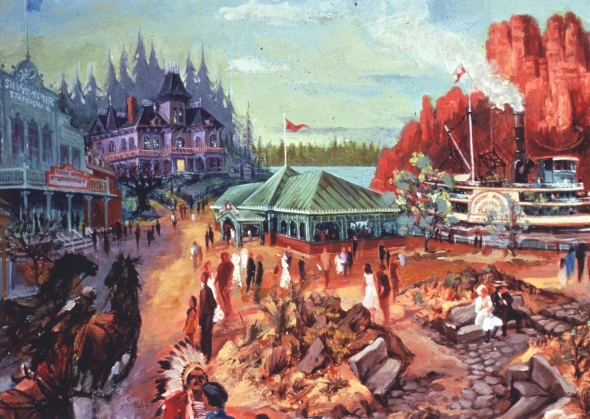
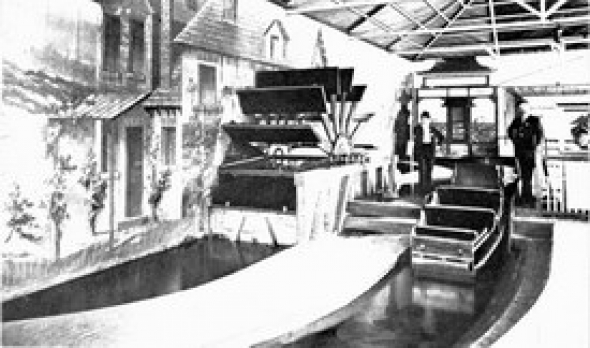
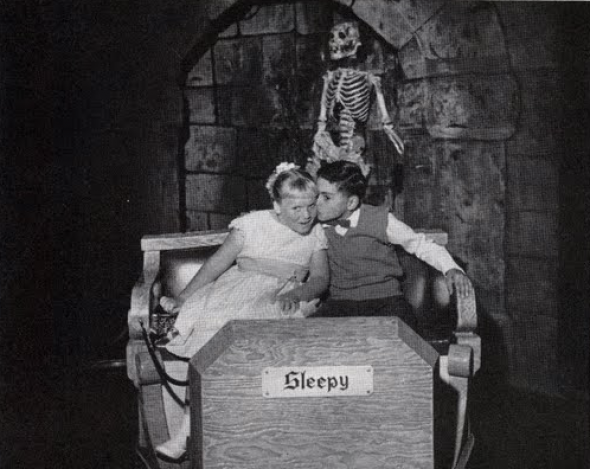
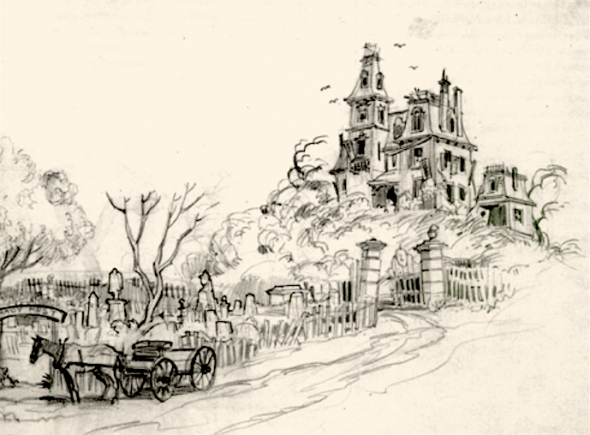
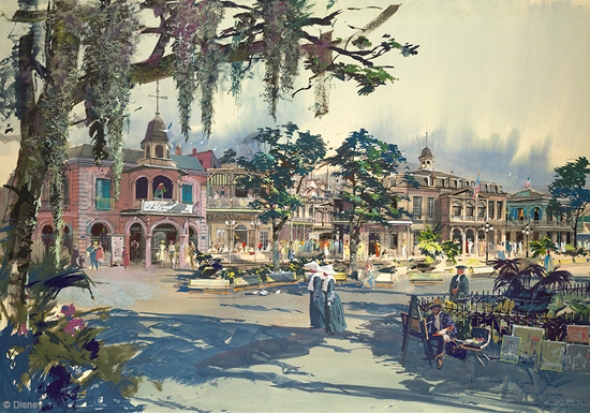
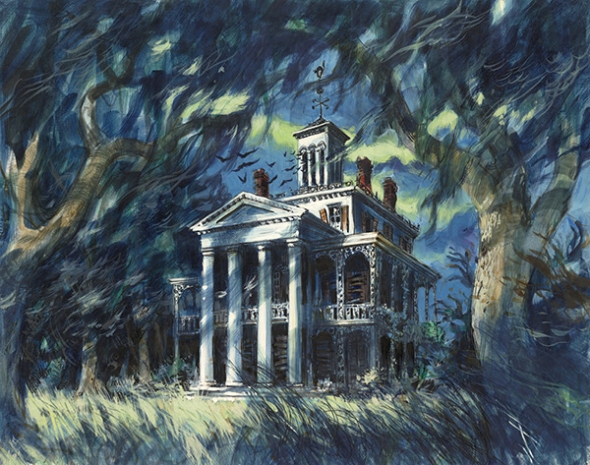
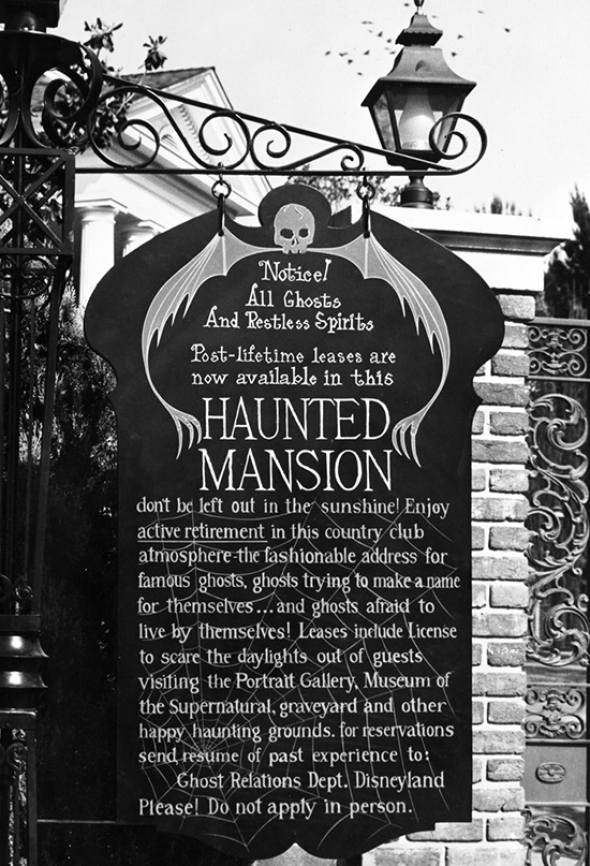
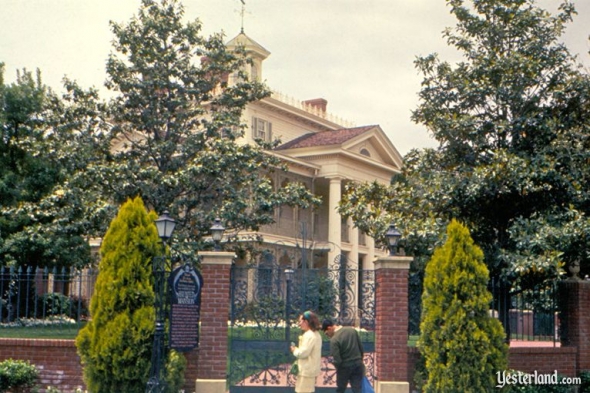
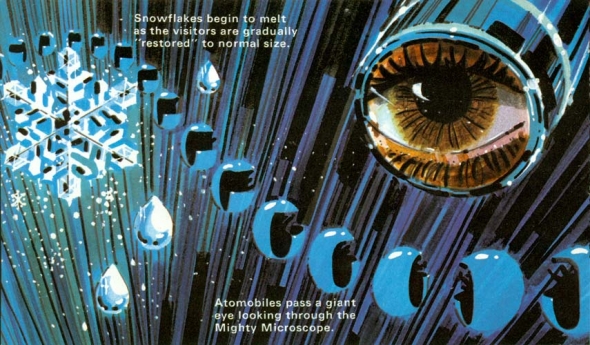
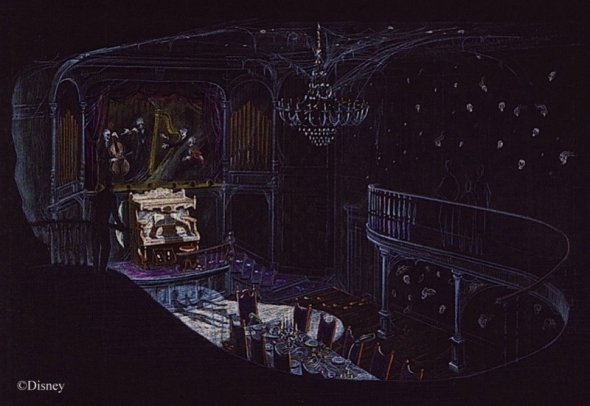
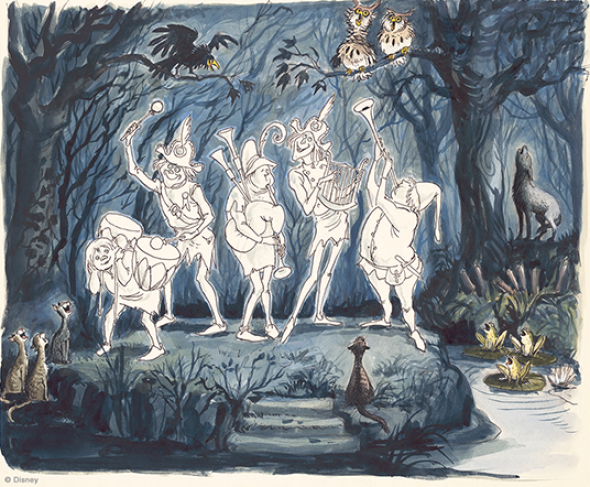
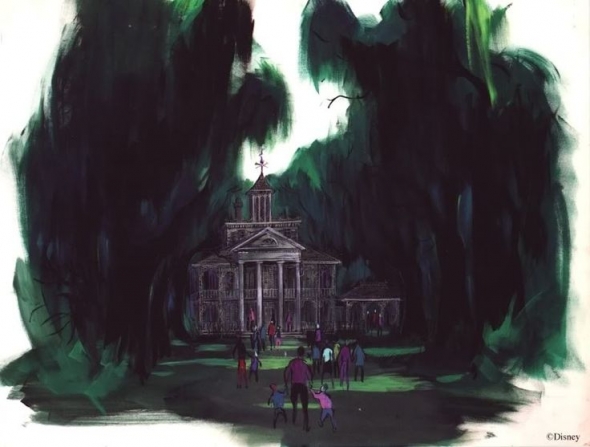

Comments
You know what's going to happen when these gondolas breakdown it was bad enough rescuing people from a thirty-year-old monorail system what's going to happen when the gondola breaks down
Was there yesterday in Paris. The ride has no waiting time. People are not interested to go in at all. When we walked in a cast member told us to wait while they got the ride ready. I can only imagine that because its so unpopular they turn things off or ride operators have other duties? Anyhow after waiting for about 5 mins the front door reopened and we went in. I had last been on this ride in 1998 as a kid. I was expecting it to be modern and upgraded. It was exactly the same. Very unfortunate but it felt terribly outdated. The effects were awful and the movements of the robots and holograms were jerky and the story was impossible to follow - too many ghostly laughs blaring out of the speakers. It felt shoddy, same as the Snow White ride. I really hope they improve the ride as there is a whole world of modern opportunities. Hopefully the next time I go the ride will be better and hopefully will attract new visitors.
Have been in several times. The Haunted Mansion "makeover" has not convinced me. Quite a lot (+95% ??) of the storyline, told in the article above, is impossible to follow on the spot. It feels like unnessessary blablabla, because simple cut-in-pieces narratives, without a KNOWN story (= a story known by everybody, locally, say in France, in larger parts of Europe..) behind the scenes, is fatally useless.
The Disney original concept (NO story at all), is a 1000 times stronger. Because, if that is the concept, visitors can BUILD their own stories on the spot...
µYou can se this in the original Haunted Mansion,
in the Original PoTC (please, throw out the whole Johnny Depp dumbness... it's destroying the ability to build your own interpretation of what you see, it's just referring to cinema CASH flow...),
in Eftelings Droomvlucht,
or in Eftelings Fata Morgana...
TOP dark ride attractions, NOT based on a story !! They are based on... emotions.
The whole theory that this Thunder Mesa bride story is enhancing the ride, is false. Most people do not even get what the multible appearances of a bride, in full "mortal" dress, has to do with ... GHOSTS ?
The attraction as such, is good, no doubt, but underperforming the Anaheim original. It's a TEMPLATE makeover job, and within the Disney imperium, therefore a weak rip off from their own original IP... quite hilarious.
If it had to be a "different" attaction, it had to be conceptualised and designed from scrap...
More, what is written in comment above already, the animatronics "quality class" is the lowest grade possible. We know that Efteling did 144 or so animatronics in their Fata Morgana attraction, and adopted a (75%...) cheaper technology to be able to build the dark ride at the limited budget, but amazingly, some of the FM animatronics perform MUCH better then those in Phantom Mannor. It has nothing to do with lack of maintenance, it's really about having installed "the most basic" Disney ever came around with.
And, the Mesa Canyon scene, is going completely OFF ghost theming... It's not because there are scattered around some parts of sceletons, that the scene is providing a ghostly impression (to say the least). The scene is way to "worldly" and fatally breaking off the "ghost ride experience". From this scene, the ride is dead, KILLED in it's own theme.... There is even way too much "worldly" light in it (a make NON believe disturbance), and all those crooked stiff animatronics...
I'm sorry, but nobody ever would build something convincing, be using the technique of cheap makeover. Work from scratch. Do your JOB as conceptualiser, storytellen and designer... this ride is like a nice pizza, where ingredients were omitted and added without a view on the whole taste effect, and with a slice cut out which was replaced by a piece of pancake with too much cinnamon, destroying the taste of the pizza when you eat it to the end.
A NO GO...
(Note, I'm writing from a viewpoint that I'm a theme park concept developer myself)